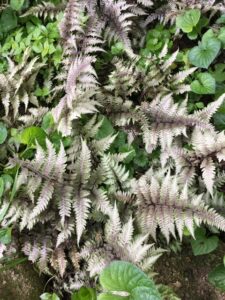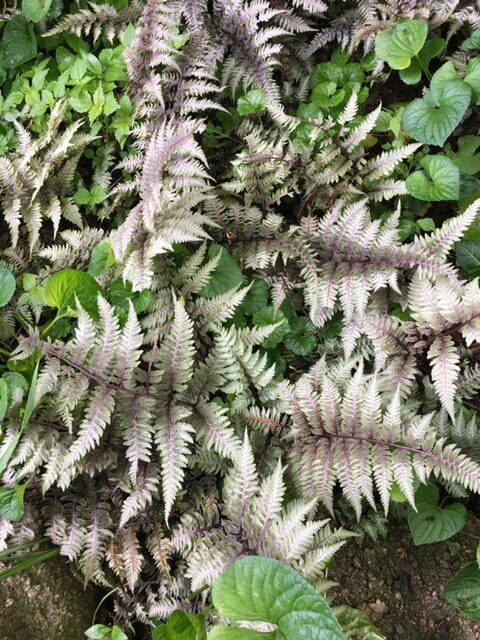May 29th
The 149th Day of the Year
It’s time to make love, douse the glim;
The fireflies twinkle and dim;
The stars lean together
Like birds of a feather,
And the loin lies down with the limb.
Conrad Aiken
Sunrise/set: 5:10/7:56
Day’s Length: 14 hours 46 minutes
Average High/Low: 77/56
Average Temperature: 66
Record High: 94 – 1895
Record Low: 35 – 1906
Weather
Rain falls more on this date than on any other May day in my history: 70 percent of May 29ths bring precipitation. Skies are often overcast as well, with nearly half of the days bringing very little or no sun at all. Chances of 90s: ten percent, of 80s: thirty-five percent, of 70s: thirty-five percent; of 60s: fifteen percent; of 50s five percent. Lows in the 30s are possible tonight well into the Lower Midwest as the seventh cold front of the month moves through. In the Caribbean, hurricane time is beginning.
Natural Calendar
Containing four or five fronts (at least one of them followed by the first heat wave of the year), the season of Early Summer extends from the final week of May through the final week of June. Strawberries, cherries, mulberries and wild black raspberries ripen in Early Summer. And Early Summer days are the longest days of the year, the sun remaining above the horizon 15 out of each 24 hours.
Daybook
1982: Catalpas seen flowering.
1987: First 17-year cicadas (they came out almost a week ago) begin to sing at South Glen. First chicory blooms at Wilberforce. Bird’s foot trefoil full bloom.
1986: First moneywort blooms at South Glen in the middle of butterflies: a silver-spotted skipper, a monarch, a tiger swallowtail, an Eastern black swallowtail, a tortoise shell and others.
1988: Ground covered with withering honeysuckle flowers. Summer cricket song increasing. Mock orange petals starting to fall now by the rabbit cage in the back yard. Poppies late bloom.
1989: Back from New Jersey to find first strawberries ripe, snowball viburnum fading, mock orange all the way open, golden Alexander, poppies, hemlock full, watercress and ragwort tall, well into Early Summer.
1991: First cricket heard. Poppies gone. Yarrow early full bloom, Japanese honeysuckle early full, follows the mock orange. Winter wheat turning quickly in the warm afternoons. First Canadian thistles open. Panicled dogwood full, catalpas at least half fallen. Linden seeds completely formed at Wilberforce.
1992: Swamp iris full bloom across from the Covered Bridge. At home, full bloom of the Siberian iris, peonies, mock orange, daisy and pyrethrum. Sweet rocket, geum, and ranunculus waning but strong. Sweet William has opened completely. To Chicago: Trefoil is blossoming, and a field of yellow sweet clover is in bloom halfway to Fairborn. Hemlock early full, foxtail grass is out, wild cherry late bloom. Some locust in bloom, many fading. Along the freeway, large patches of orange dock, yellow rape and sweet clover. All corn about three inches from Yellow Springs to northern Illinois, wheat tall, waving, and turning pale green. At Crown Point, Indiana, the locusts are in full bloom, entire wood lots of them.
1993: First bowl of strawberries for breakfast. First rose opened, yellow-pink; first achillea, pastel pink. First fleabane in the garden suddenly decays. Mornings definitely quieter. Catbirds, doves, grackles still call, but the cardinals are less obvious, and blue jays seem to be gone. May apple fruit the size of a cherry pit at North Glen. Silver olives and black walnuts noticed in bloom.
1995: New growth on the spruce trees at the park has reached two to three inches on most of the branches and darkens a little now.
1998: The tadpoles are almost all gone from the pond, and the green frog barks and bongs day and night. Privet opening and fragrant now. Japanese honeysuckles full bloom and sweet. Common fleabane season ends, the first daisy fleabane opens.
2000: To Goshen: Full parsnips, yellow sweet clover, crown vetch, nodding thistles, blueweed, blackberries, coreopsis, Canadian thistles, daisies and hemlock. Cottonwood cotton drifting. Redwings still nesting. Corn three inches. Grasses and wheat turning. Turtle seen near St. Mary’s. Peonies in Van Wert. In Goshen: pink rhododendrons, red clover.
2002: Very first pink spirea opened in Washington Court House. First deep purple Japanese iris bloomed in the pond. Two water lily flowers open so far.
2003: At Charleston, South Carolina, elderberries and catalpas full bloom. At Santee, wheat is dark brown, corn waist high. On the reservoir, ospreys are nesting, flying back and forth with small fish to feed their young.
2004: Yellow swallowtail and black swallowtail seen today, the first group of five cabbage butterflies, and a large hatching of green-bottle flies. First linden flowers open in the park.
2005: The mountain maple at Antioch School has seeds about a fourth of an inch long. In our yard, blue flags, daisies, catmint, peonies, mock orange, cressleaf groundsel, sweet rockets and swamp iris are in full bloom. Sweet Williams and spiderwort are in early bloom. Tat called this afternoon from Madison, Wisconsin, her peonies and iris only a little behind those in Yellow Springs.
2006: Several hot days in a row now have brought the spinach and lettuce to full height, have given the tomatoes a growth spurt, have pushed the rhubarb into a decline, have brought red and pink roses to the garden, ended the honeysuckle, opened a few privets, pink spireas, some white achillea, pulled a fourth of the petals from the mock orange and the peonies. Rockets are aging but still dominant in the north gardens, punctuated by sweet Williams and cressleaf groundsel. The purple rhododendron along Elm Street is magnificent; the lone surviving rhododendron at home is bravely in full bloom.
At the park by the church, one yellow poplar tree is loaded with blossoms. A few red oak trees have acorns a fourth of an inch in diameter. Along Limestone Street, the linden is flowering. The cherries on the pie cherry tree on Dayton Street are almost half size. The ash tree in front of the house has all its green seeds, a little more than an inch long. Peaches on Neysa’s tree are blushing, an inch and a half long, an inch wide. One volunteer redbud transplanted today, one pansy redbud planted along the south central edge of the yard underneath the honeysuckle and the hackberry.
At about 3:30 this afternoon, we heard droning in the back yard and saw that a swarm of Italian bees was moving into the old locust along the west border. By 5:00, they had settled in for the night. Over the last several days, two small camel crickets found in the sink, the first of the new brood to explore outside their crawl space.
2007: Cedar waxwings were feeding in the white mulberry tree this morning at 8:30; then they moved on by midmorning.
2008: No red-bellied woodpeckers calling this morning, nor for several mornings. Some robins clucking, but the alley was rather quiet. In the back yard, though, grackles, the blue jay, the wren and sparrows were flying all over the feeders. One hummingbird seen. Yellow and red sweet clover found blooming by the side of the road, more parsnips and hemlock. Lamb’s ear and the tall, blue, five-petaled flower with the bristly stem I haven’t identified yet opened overnight. Locusts still full throughout the countryside. The new wisteria is in full bloom. Red wiener-like mushrooms still appearing like they have for the past two or three weeks. Don’s pie cherries about half size. One yellow swallowtail flew across the yard. Two grackle babies begging from their parents.
2009: Grackles have been so loud all day, mating and feeding their young. Jeanie saw a father cardinal feeding its baby. Daisies, yellow sweet clover, nodding thistles, red and white clover, white hemlock, yellow parsnips have taken over the countryside. First daisy fleabane open in the north garden. Sweet rockets are holding at about a third to a half, cressleaf groundsel still full. Peonies are almost done, and only four pond iris remained today, a few last mock orange flowers, a few honeysuckle, a few locusts. Now Japanese honeysuckle fills in for the lost fragrance of middle May. Two cabbage whites were tucked into a peach leaf, mating quietly as I walked by this morning.
2010: Evening primrose opened overnight. Five swamp iris blooming in the pond. Tails have formed on the lizard’s tail. Constant morning clucking of grackles and the rasping whining of young starlings. Small green bee fly on the porch, narrow winged alypia-like brown moth on the back screen, single markings on each wing.
2012: A new hatch of cabbage whites in the past day or so. A sulfur and a polygonia this afternoon. The yard loud all day with sparrow and robin, grackle, wrens, and starling calls, steady, insistent. Occasionally I glimpse a fledgling being fed. The great blue hosta is starting to bud along the west garden. Evening primrose at peak of full bloom. Near Fairborn, winter wheat pale golden with a hint of green, some corn knee-high.
2014: First pink spirea noticed at the church this morning. Honeysuckle flowers falling more intensely now. The circle garden of spent hyacinths is a mess, foliage collapsed everywhere, some browning. Only one or two cabbage whites seen in the yard all spring. Casey says he has a lot of male tiger swallowtails out at his place along Nash Road.
2015: As I was getting ready to leave for Wisconsin, I found the first deep purple Japanese water iris had opened during the night, just like on this day in 2002.
2016: Cloudy and very mild 65 degrees. Walk to listen for birds with Emily: Clucking in the bushes probably by an anxious robin at 3:35 a.m., first cardinal at 3:56, robin chorus beginning faintly at 4:05 and gathering momentum for the next hour, song sparrows and chipping sparrows, Carolina wrens joining in, blue jays and crows and house sparrows around 5:00, a red-bellied woodpecker at 5:20. Emily heard warblers, but wasn’t able to tell which kind. We didn’t hear cedar waxwings, but Emily said she had heard one yesterday and that she and her father had seen a firefly on the 27th. A male tiger swallowtail flew by me as I transplanted zinnias this afternoon. Hard rain this evening collapses peonies and spiderwort.
2017: Jill saw the first firefly tonight, then more appeared as we walked. Jill also said she and Dimi had found numerous very small toads during one of their walks yesterday. Throughout town, coreopsis and lamb’s ear are in full bloom – I missed their early flowering, must have been over a week ago. At the Brukner center honewort blossoming, mosquitoes thick.
At the Lockington preserve, poison ivy almost in bloom, Virginia creeper budded, another full flowered catalpa seen, a nodding thistle blossoming, a red admiral butterfly, a male tiger swallowtail. A first golden day lily just open at Dimi’s, two of her stella d’oros starting, her baptisia almost gone, a dogwood nearby still full flowered but aging.. Bright yellow primroses coming in throughout the neighborhood.
2018: Buds have formed on the Japanese pond iris, a little later than the day lily buds.
2019: Storms and rain continue. At 4:30 this morning, robins and cardinals loud and clear. Buds appeared on the milkweed overnight. I saw the first green bottle fly in the bee balm and a red admiral butterfly at the hummingbird feeder. Pink spirea full bloom about town, some tea roses, yellow and red, seen on Dayton Street. Chicory stalks grown tall in the field past Ellis. Still no fireflies in the yard tonight.
2020: Privets opening. Two scorpion flies seen in the ditch lily bed, the first of the year. Rain and cool throughout the day.
The spring is fresh and fearless
And every leaf is new,
The world is brimmed with moonlight,
The lilac brimmed with dew.
Sara Teasdale


